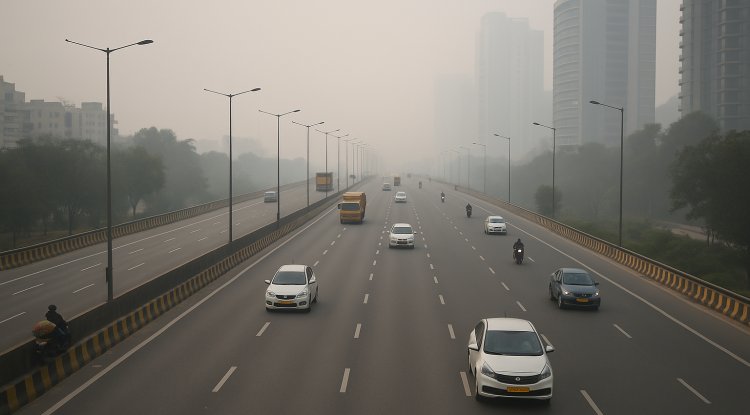Sustainability Rules Transform the Landscape of EV Development
Sustainability regulations are driving global EV sales, with the EU, China, and US leading growth, but battery supply chain issues and infrastructure gaps remain challenges.Sustainability regulations boost global EV sales, led by the EU, China, and US, but supply chain and infrastructure challenges persist, says the IEA.

Sustainability regulations are transforming the global electric vehicle (EV) market, driving production, reshaping supply chains, and boosting consumer adoption. According to the International Energy Agency (IEA), these policies are accelerating EV growth while posing challenges for manufacturers navigating stricter environmental standards. The shift reflects a global commitment to reducing carbon emissions and transitioning to cleaner transportation.
The EU, China, and the United States, which collectively account for 70% of global EV sales, have introduced stringent regulations to phase out internal combustion engine (ICE) vehicles. The EU’s 2035 ban on new ICE vehicle sales has driven a 30% increase in EV sales since 2023, with 2.5 million units sold in 2024. China, the world’s largest EV market, holds a 60% share of global sales, supported by mandates requiring 40% of new vehicles to be electric by 2030 and subsidies of up to $7,000 per vehicle. In the US, the Inflation Reduction Act provides tax credits of $7,500 for EVs, boosting domestic production by 25% since 2022. These policies have spurred investments, with global automakers allocating $500 billion to EV development by 2030.
Battery supply chains face significant pressure due to regulations on sustainable sourcing. The EU’s Battery Regulation, effective 2024, mandates that 50% of battery materials, such as lithium and cobalt, come from recycled or local sources by 2030. This has led to a 20% increase in battery recycling facilities in Europe, with companies like Northvolt processing 10,000 tons annually. In China, regulations require 60% local content in EV batteries, prompting firms like CATL to expand domestic mining operations. However, global shortages of critical minerals—lithium supply is expected to fall 15% short of demand by 2028—have driven prices up 30% since 2023. To address this, automakers are investing in alternative battery chemistries, such as sodium-ion, which could reduce lithium reliance by 10% by 2030.
Consumer adoption is rising but varies by region. In the EU, EVs account for 15% of new vehicle sales, supported by 1 million public charging stations. In contrast, developing markets like India and Brazil see only 5% EV penetration due to high costs and limited infrastructure. Subsidies and tax rebates are critical, with 80% of EU buyers citing financial incentives as a key factor. However, upfront costs remain a barrier, with EVs averaging $40,000 compared to $25,000 for ICE vehicles. The IEA projects global EV sales could reach 20 million annually by 2030 if infrastructure expands and costs decline. Fast-charging networks are growing, with China adding 500,000 stations in 2024, but rural areas in the US and EU lag, with only 20% of chargers outside urban centers.
Automakers are adapting to regulations through innovation. Tesla has increased production of its Model Y by 20% in Europe to meet demand, while Toyota is launching 10 new EV models by 2027. Smaller manufacturers, like Vietnam’s VinFast, are entering global markets, exporting 50,000 EVs in 2024. Regulations also encourage vehicle-to-grid (V2G) technology, allowing EVs to supply power to homes, with pilot projects in Germany and Japan showing a 10% reduction in household energy costs. However, compliance costs are high, with automakers spending $5 billion annually on regulatory adherence. Supply chain disruptions, particularly for semiconductors, have delayed production for 30% of manufacturers.
Environmental benefits are significant but not universal. EVs reduce emissions by 50% compared to ICE vehicles over their lifetime, but battery production generates 74% more emissions than ICE vehicle manufacturing. Recycling and renewable-powered factories are mitigating this, with 40% of EU battery plants using solar or wind energy. Social concerns, such as cobalt mining’s impact on communities in the Congo, have led to regulations requiring ethical sourcing certifications. The IEA notes that global cooperation is essential, as fragmented policies could increase costs by 15%. Emerging markets need $200 billion in investments to scale EV infrastructure, a gap that international partnerships could address.
Conclusion
Sustainability regulations are fueling the EV market’s growth, with sales surging in major economies, but supply chain constraints and infrastructure gaps pose challenges. Continued investment in recycling, alternative batteries, and charging networks will be critical to sustaining this momentum. As governments tighten policies, the EV sector is poised to reshape global transportation, provided it overcomes current hurdles.
Source: Sustainability Magazine
What's Your Reaction?

















